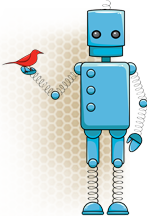Earlier this month, I posted about how a principled approach to citizen science could help shape the field. In this second part, I look at one novel online project that’s helping citizen scientists connect both with each other and with scientific researchers and research teams that want (or need) their help.
Thanks to a Pathways grant from the National Science Foundation, a web-based resource called SciStarter 2.0 is a global public science engagement tool in-the-making. While SciStarter 2.0 is now simply a website, it may someday be much more. I asked Darlene Cavalier, Professor of Practice at Arizona State University, and founder of the original SciStarter program, to tell me a bit about it.

Image: SciStarter 2.0 logo.
According to Cavalier, the NSF funding and recent move of SciStarter to ASU enabled the team to pivot from an initial emphasis on the web-based system as a project finder (helping people find science projects) toward providing more support for all participants by making it easier to find people (both fellow citizen scientists and/or researchers in need of their contributions) and to keep track of everyone’s contributions. Such an approach not only formalizes the process for finding and participating in science, but it also helps, says Cavalier, “to enhance, diversify, and validate a participant’s involvement in citizen science.”
By expanding SciStarter 2.0, Cavalier notes:
We are building a prototype that will explore the potential for expanding, deepening, sustaining, and studying public engagement in science through: (1) an integrated registration for participants to more easily engage in one or multiple citizen science projects, across platforms; (2) GIS implementation for project owners to define the geographic boundaries of projects so people can find them more easily; (3) an online, personal dashboard for participants to track their projects, participation, and contributions to science, share and save data, record interests in projects, create profiles, and find people and projects of interest to them; (4) use of these tools (integrated registration, GIS, dashboard) by project owners and researchers to better understand and respond to the needs and interests of citizen science participants.”
The long-term goal of SciStarter 2.0 is to produce a highly improved and efficient system for identifying, recruiting, informing, and connecting with the tens of thousands (or more) of citizen scientists whose life paths may have taken them in directions divergent from professional scientific practice, but whose passion for science could be a global intellectual resource.
The SciStarter 2.0 team is currently working with the Citizen Science Association, Arizona State University’s School for the Future of Innovation in Society (SFIS) and Center for Engagement and Training in Science and Society (CENTSS), Discover magazine, Astronomy magazine, PBS Kids/SciGirls, WHYY, Public Library of Science, the National Science Teachers Association, and other citizen science project owners and communities to test and refine SciStarter 2.0. The system should be ready for prime time by January 2017.
An anthropology of citizen science?
For the CASTAC crowd, however, moving SciStarter to ASU also had certain benefits that may be of special value for their analytical potential. Cavalier explains:
SciStarter 2.0 will build on existing relationships, prior research, grant-supported programs, and technologies to create and refine a prototype system that not only directly supports participation in citizen science, but also serve as a resource to enable future inquiry into fundamental questions about why and how citizen scientists participate in projects. With it we can begin to better define the participant community and learn who is doing what, where, and what data, experiences, and interests they have. Currently, this cannot be studied efficiently across research disciplines in a manner that enables researchers and practitioners to understand, and effectively respond to, the needs of their communities. The proposed prototype will serve as a critical first step to enable the future design of full-scale research investigating the motivations, behaviors, impact, and learning outcomes of citizen scientists.
Initially, SciStarter 2.0 will be focused on building the digital capacity needed to help people keep track of experiences and contributions to STEM through citizen science. A SciStarter 2.0 single sign-on (serving as an identity management system) and dashboard could serve as an e-portfolio of sorts for users, that is, a kind of digital collection of science experiences to show to a potential collaborator, or even employer. With that kind of data in hand, Arizona State University’s School for the Future of Innovation in Society hopes to explore if and how informal STEM experiences, including citizen science, can be translated into formal validations leading to college credits, new career paths, and so forth.
As usual, there are more questions than answers to think about when it comes to the anthropology of citizen science. Will the rise of citizen science (and tools like SciStarter 2.0) change the established practices of science that have been under ethnographic scrutiny for the past several decades? Since the likes of Bruno Latour, Sheila Jasanoff, Sharon Traweek, Steve Woolgar, and a cadre of others began conducting cultural studies of science, anthropological studies of science and technology have focused on practices and the material culture of professional scientists. Will the rise of citizen science necessitate new ethnographic investigations and analyses of science that are more deeply integrated with the public and therefore practiced differently? If so, how, where and when do we all begin this exciting new work?

1 Trackback